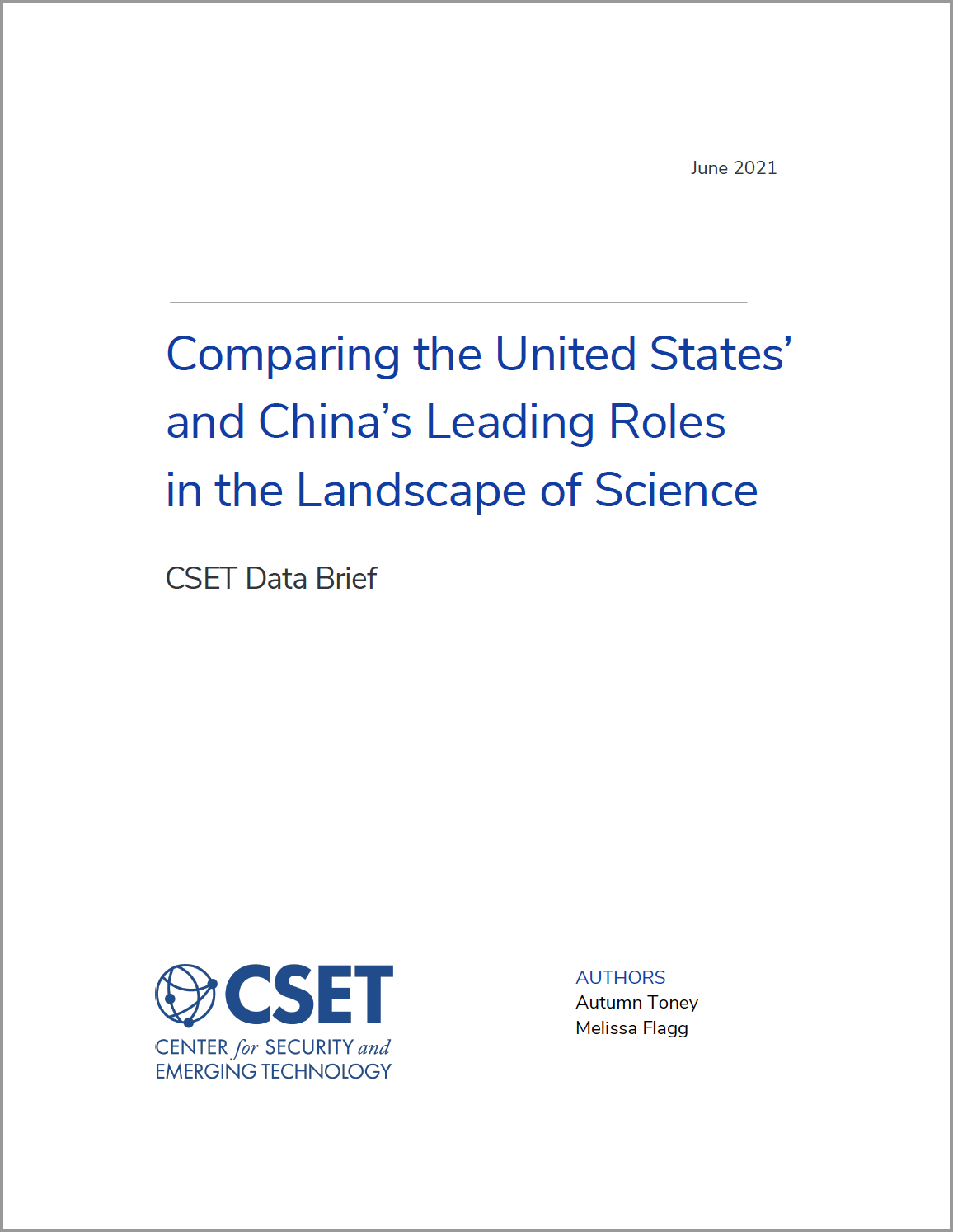Introduction
Research output is a frequently used index to assess the global competition for leadership in science and technology (S&T). This competition—among countries as well as institutions—leads to challenging questions: Which countries are leading in publication output? Which institutions are producing the most influential research? Which organizations are investing the most in research?
These questions are frequently addressed with broad overviews of the research landscape, but a focused analysis on subsets of research provides more nuanced and accurate comparisons. While one entity may appear to dominate in a broad area of research, it might fall in the ranks when the research area is broken down into subsets.
To explore country-level research output at varying levels of granularity, we navigate the landscape via CSET’s recently developed Map of Science. Using this clustering of scientific research publications that is sourced from a massive database, we analyze scientific publication output at three different levels of aggregation: 1) research clusters, 2) research regions, and 3) research districts. We present a comparative analysis of U.S. and Chinese research publication outputs using these different aggregations of scientific research publications.
This work lays the foundation for further studies of the data to understand the nuances in scientific research and thorough analyses of research output competition.
Key findings include:
- Different levels of scientific research publication aggregation can lead to different analytical conclusions—specificity matters.
- In a granular view of global scientific research, the United States and China, combined, dominate almost two-thirds of the research publication output. However, the rest of the world leads in more than one-third of publication output.
- In a general view of global scientific research, China leads research publication output in STEM fields, whereas the United States leads in medicine and social science, with no major competitors.
